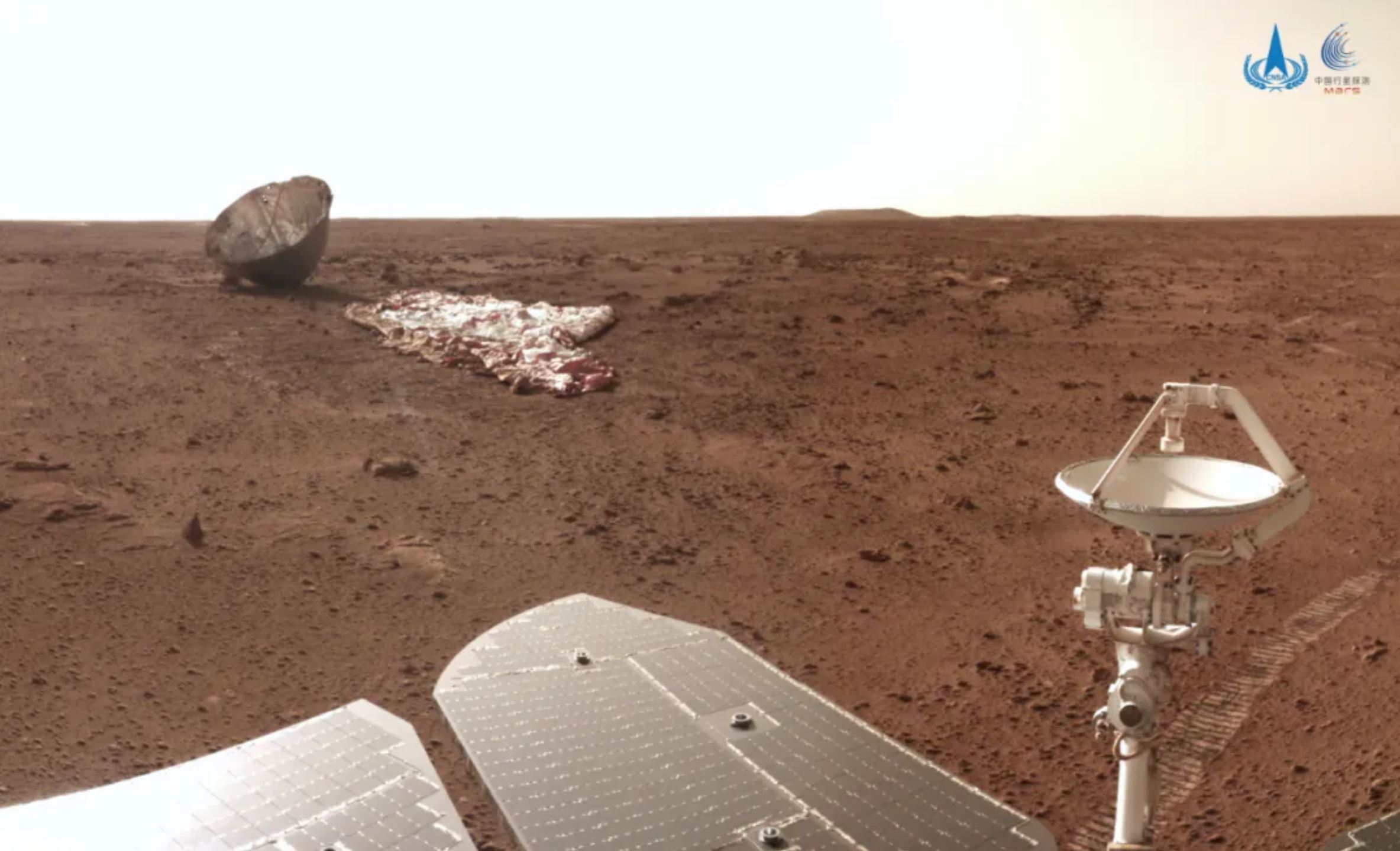
HELSINKI — China is fine-tuning the details of the Tianwen 3 mission to collect samples from Mars and deliver them to Earth.
New mission details and specific targets were revealed in presentations made at the International Deep Space Science Conference in Hefei, Anhui Province, April 22.
The mission will use a pair of Long March 5 rockets to send two separate sets of spacecraft toward the Red Planet around 2030 with the goal of collecting and returning 500 grams of samples.
Mission objectives include searching for evidence of life on Mars, understanding the ecological and climatic evolution of the Red Planet and the possibility of its past habitation.
The two Long March 5 launches will carry a lander, ascent, orbiter and return module, respectively. Entry, descent and landing will depend on the technology used to land the Zhurong rover as part of China’s Tianwen-1 mission to Mars.
Sampling, as with China’s 2020 Chang’e-5 lunar sample return mission, will use a rover-based robotic arm to collect surface samples and a drill to collect material from up to two meters below the surface.
In a new development, the lander will also have limited ability to collect samples near the landing site, using either a crawling six-legged robot or a helicopter-like creation. The Chinese Academy of Sciences (CAS) will unveil a prototype of the latter in 2021.
The collected samples will be sent to Mars orbit using a two-stage ascent vehicle. It will consist of a solid first stage and a liquid propellant upper stage with a total mass of at least 360 kg.
The ascent vehicle then docks with the orbiter and return module, with docking assisted by a robotic arm. The collected material will then be transferred to a return module for return to Earth.
The vague launch schedule indicates, but does not confirm, a reversal from the previously mentioned 2028 launch schedule.
A mission profile has been submitted for Mars sample return in China in June 2022 for a targeted launch in late 2028 with samples delivered to Earth in July 2031.
The 2028 schedule will see samples delivered to Earth ahead of NASA and the European Space Agency’s Mars Sample Return mission. The mission also aims to deliver about 500 grams of Mars samples to Earth.
Landing site selection is conducted with invited input from international teams. Engineering constraints mean that the landing will occur between 17 and 30 degrees north latitude, due to power and lighting requirements. The landing ellipse will be 50 by 20 kilometers.
Potential sites require them to be at least 3,000 meters below zero altitude, or the equivalent of sea level on Earth. This provides the rover with more atmosphere to move through to slow its descent to Mars.
Site selection will also be balanced by scientific goals. The site chosen will need to be considered astrobiologically relevant, with priority given to Martian terrain more than 3.5 billion years old.
Environments suitable for the emergence and preservation of life such as sedimentary or hydrothermal systems, evidence of past water activity and geological diversity were cited as key priorities. the
The mission will also adhere to the highest standards of planetary protection protocols, according to the presentations.
Liu Jizhong of the China Lunar Exploration and Space Program Center of CNSA, and Huo Zengqian of the Institute of Geology of the Chinese Academy of Geosciences delivered offers In Hefei, which was later subscriber on Chinese social media.




More Stories
Boeing May Not Be Able to Operate Starliner Before Space Station Is Destroyed
Prehistoric sea cow eaten by crocodile and shark, fossils say
UNC student to become youngest woman to cross space on Blue Origin